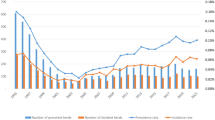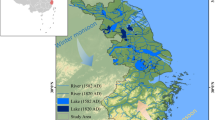Abstract
The red locust, Nomadacris septemfasciata (Serville) is one of the major plague locust species of serious potential threat to agriculture in Zambia. Two of its eight outbreak areas, Mweru wa Ntipa plains and the Kafue Flats, are found in Zambia. The Kafue Flats have now become more important because of high levels of locust activity, occasionally forming swarms. Locust control in Zambia has been mandated to the International Red Locust Control Organisation for Central and Southern Africa (IRLCO-CSA), a regional cooperative effort of 8 member countries. Regional cooperation for locust control has proved practical and economical for Zambia.
Résumé
En Zambie, le criquet rouge, Nomadacris septemfasciata (Serville) constitue le plus grand fléau parmi les espèces acridiennes capables d’infliger des lourdes pertes à l’agriculture. Deux parmi les huit foyers de reproduction et de formation d’essains sont localisés en Zambie. II s’agit des plaines de Mweru wa Ntipa et des plateaux de Kafue. Les plateaux de Kafue sont devenus très importants étant donné les activités intensives de ce criquet, y observées qui débouchent sur la formation d’essaims. La Zambie a été choisie par l’Organisation Internationale de Lutte contre le Criquet Rouge pour l’Afrique Centrale et Australe (IRLCO-CSA), laquelle organisation est le fruit des efforts de coopération entre les huit Etats membres. La Zambie a profité du point de vue pratique et économique, de cette coopération régionale contre le criquet.
Similar content being viewed by others
References
Anonymous (1963) IRLCO-CSA Report of Governing Council Meeting.
Anonymous (1998) Annual Reports of the IRLCO-CSA, 1984–1998.
Bahana J. W. (1999) Fifty years of red locust plague prevention, p. 8. In Proceedings of the First ARPPIS Symposium. Abstracts (Edited by C. B. Maranga). ICIPE Science Press, Nairobi.
Breisford W. V. (1955) The problem of Mweru wa Ntipa. N. Rhod. J. 2, 3–15.
Gunn D. L. (1952) The red locust. J. Royal Soc. Art. London 100, 261–284.
Gunn D. L. (1955) Mweru wa Ntipa and the red locust. N. Rhod. J. 2, 3–15.
Gunn D. L. (1957) The story of the red locust. Rhodesian Agrie. J. 54, 8–24.
Gunn D. L. (1960) The biological background of locust control. Annu. Rev. Ent. 5, 279–300.
IRLCO-CSA (1988) Annual Report of the Director.
[MAFF] Ministry of Agriculture, Food and Fisheries, Zambia (1997) Agricultural Statistics Bulletin 1995 / 96. 53 pp.
Morant V. (1947) Migrations and breeding of the red locust in Africa 1927–1945. Anti-locust Mem., London No. 2, 59 pp.
Symmons P. M. (1964) The dynamics of the most recent plague of the red locust, Nomadacris septemfasciata (Serville), with special reference to the importance of climate and weather. University of Bristol, PhD Thesis. 15 pp.
Vesey-Fitzgerald D. F. (1955) The vegetation of the outbreak areas of the red locust in Tanganyika and Northern Rhodesia. Anti-Locust Bull. 20, 1–32.
Author information
Authors and Affiliations
Rights and permissions
About this article
Cite this article
Mulele, M.R., Ngolwe, A.K. Importance of Regional Cooperation in Red Locust Control in Zambia. Int J Trop Insect Sci 19, 273–276 (1999). https://doi.org/10.1017/S1742758400018889
Accepted:
Published:
Issue Date:
DOI: https://doi.org/10.1017/S1742758400018889




